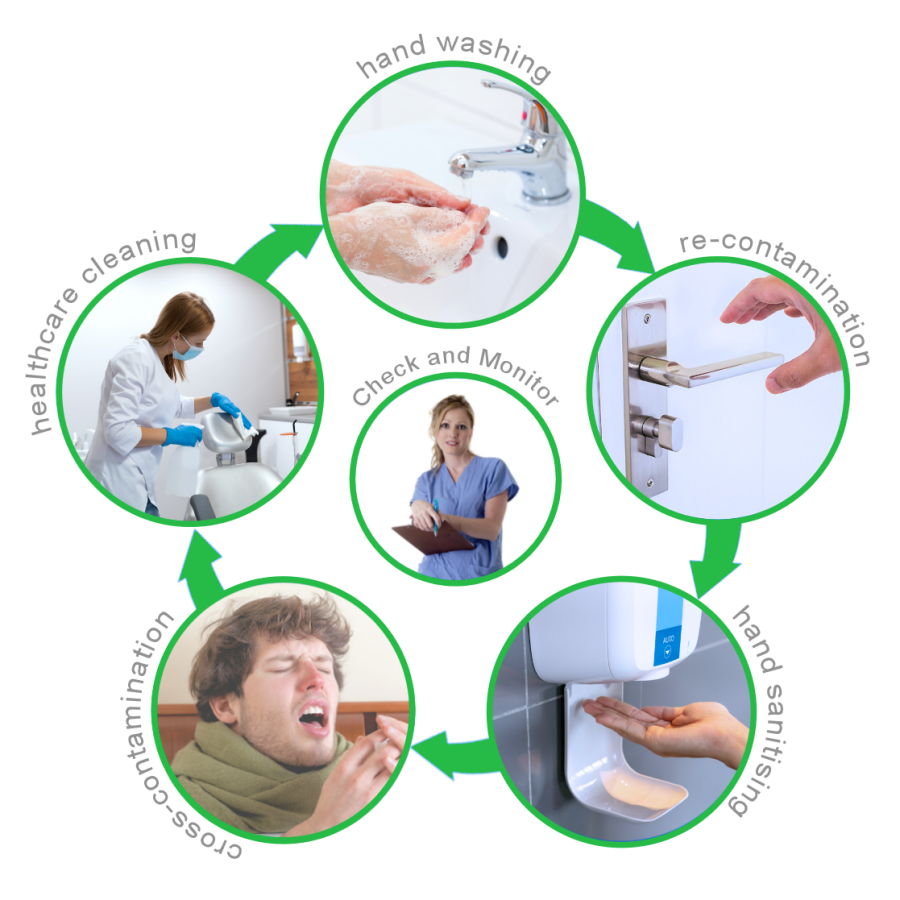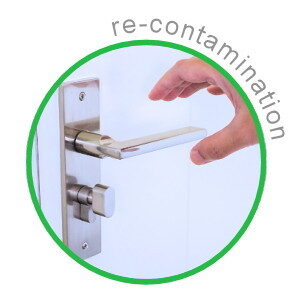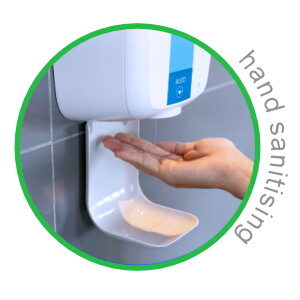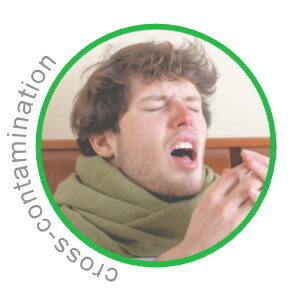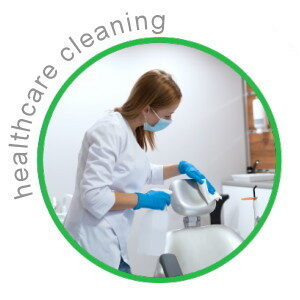The Circle of Hygiene
Breaking the cycle of contamination
Healthcare Hygiene is not just about hand washing and hand sanitising, it’s about breaking the cycle of contamination, re-contamination and cross-contamination. Its about healthcare environment cleanliness.
Clean, sanitised hands are great until they touch a contaminated surface, piece of equipment, object or person. Then just as in the childhood game, they become ‘IT’ and will now cross-contaminate whatever they go on to touch!
So its about balance; Hand and surface hygiene working together as one, and as such, it is profoundly important we strive to keep the healthcare environment we work in, as hygienically clean as we keep our hands.
Hands can become unknowingly contaminated by the mere touch of an already contaminated surface, piece of equipment, object or person. Once contaminated, hands become the propagation vehicle for onward touch cross-contamination.
Following proper hand washing procedure, will cleanse hands and decontaminate them ready for use. Applying hand sanitiser will complete the cleaning process.
Frequent hand decontamination is achieved using alcohol based hand sanitizer (when properly applied) to neutralise non-visible contamination present on the hands, and so help prevent further cross-contamination.
As there are germs and chemicals against which alcohol based hand sanitisers are ineffective, hands should be properly washed, regularly.
Poor hand hygiene practice together with airborne coughs and sneezes, will ensure widespread contamination over many surfaces.
The wearing of face masks and observation of ‘socially expected’ hygienic coughing, sneezing and nose-blowing practices, will help reduce the amount of virally contaminated airborne droplets expelled in this manner.
Airborne, dispersed pathogens and chemicals make every surface a potential minefield of contaminants and a source of re-contamination. Without regular hygienic cleaning of ‘frequently touched’ surfaces, equipment and objects, other hygiene practices such as hand hygiene, would be considerably less effective.
All ‘frequent touch’ points, surfaces, equipment and objects should be regularly cleaned and sanitised to minimise the risk of further cross contamination.
Underpinning healthcare cleaning practices, are regular spot checks by Infection Prevention & Control, to monitor how hygiene standards are being maintained and establish if training / re-training may be necessary.
Update your IP&C policy with Hygiene Inspection roles and responsibilities including a detailed list of ‘hygiene checkpoints’ to choose from and a frequent inspection schedule.
WASH & GLOW and UV GERM products are designed to address one (or more) points on the Circle of Hygiene. They do not clean or sanitise; you have other products to do that. What they will do, is help you teach your colleagues how to break the cycle of contamination, and so help improve hygiene standards right across the board.
Cleanliness Training is part of the NHS Training Directive
6.6. Hand Hygiene
Hand washing is one of the most important steps in reducing the risk of transferring infections in a healthcare environment. The correct hand washing technique should form part of all mandatory training with a programme of ongoing monitoring for all staff.
Cleaning is a vital part of the overall infection prevention and control (IPAC) process, which aims to provide a clinically clean and safe environment for delivering patient care. Areas that are not cleaned properly could aid the transfer of harmful organisms in a healthcare environment, potentially causing infection. For this reason, the importance of robust training is paramount. All levels of the cleaning team, as well as anybody else undertaking cleaning tasks, should be clear about their roles and responsibilities.
24 | 6. Importance of effective cleaning
Infection prevention and control Cleaning regimes should be underpinned by Standard Operating Procedures and any other national guidance, as well as the current cleaning manual (2009)7
P22 Achieving and maintaining a clean clinical environment
… Any staff whose role includes responsibility for cleaning of equipment should receive training on how to clean. Regular monitoring or audits of cleanliness contracts should be in place to provide assurance that systems are working well.
4. Training
…As a minimum, training must be given in the performance of cleaning tasks, the use of cleaning equipment and control of infection.
Training should be completed before new staff members are allowed to work without direct supervision.
Training should be repeated in its entirety every year or sooner if a competency issue has been identified.


